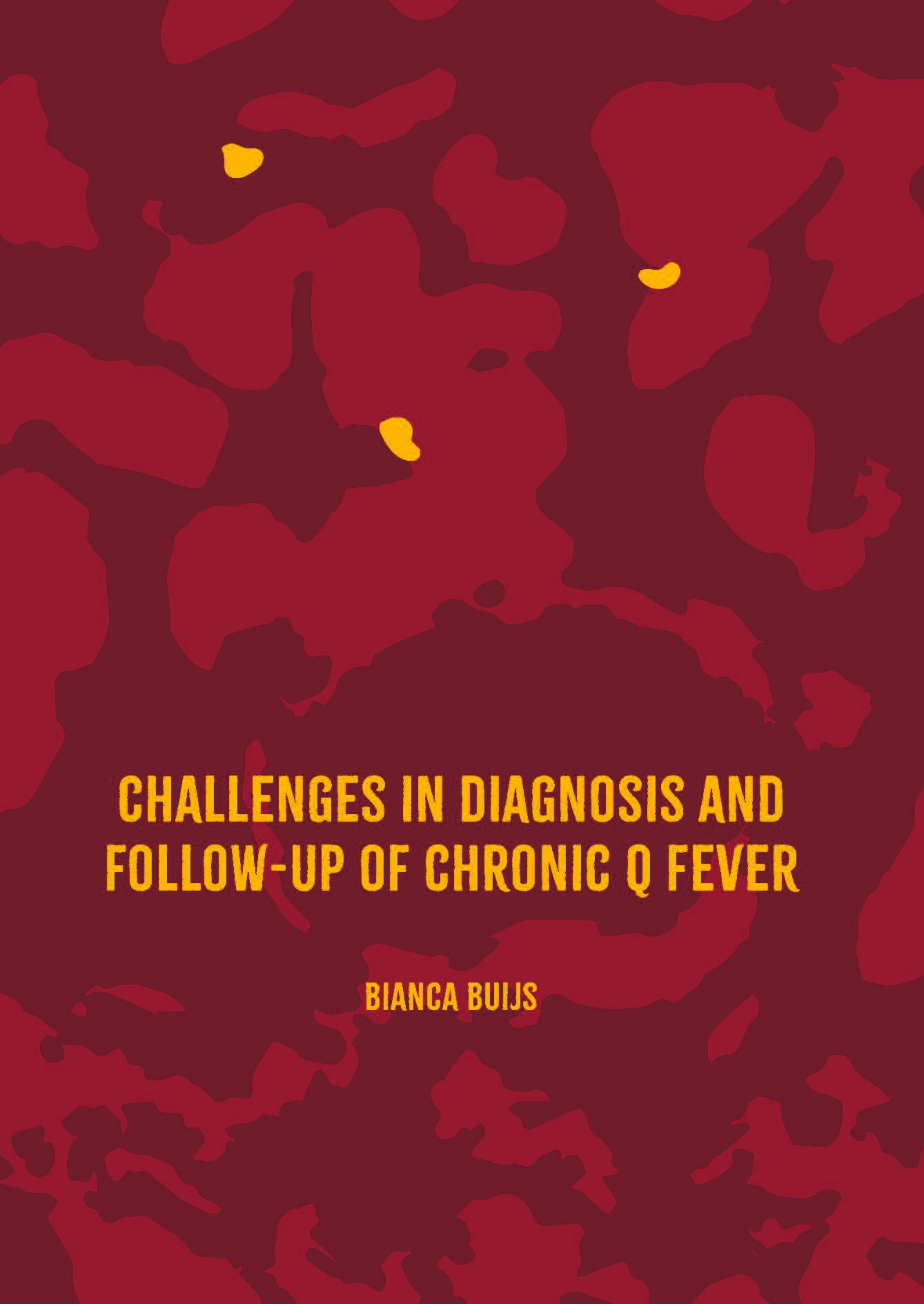Follow-up of chronic Q fever patients should be continued in order to obtain better long-term epidemiological insights in this potentially deadly infection. In addition, identifying prognostic factors for therapy failure is necessary, to better predict which patients are at risk for complications after therapy so that treatment can be escalated properly, wrote Bianca Buijs (UMC Utrecht) in her PhD thesis that she defended recently.
Q fever is a disease caused by infection with the Coxiella burnetii bacterium. This intracellular pathogen is uncommon, but may be found in cattle, sheep, goats, and other domestic mammals, including cats and dogs. From 2007 to 2010, a large Q fever outbreak occurred in The Netherlands. Eight years later, new patients with chronic Q fever were still being diagnosed. In 2018, 519 chronic Q fever patients had been identified with an incidence of approximately 20 new cases per year. Diagnosis of chronic Q remains difficult, resulting in a long period between initial infection and diagnosis of chronic Q fever. In her PhD thesis, Bianca Buijs, MD (Department of Infectious Diseases, UMC Utrecht) investigated various diagnostic and prognostic factors relevant to Q fever.
The diagnostic value of Fluorescence in Situ Hybridization (FISH), a time-consuming test in which the bacterium is labeled with fluorescent dye and identified through a microscope, turned out to be lower than the standard polymerase chain reaction (PCR) test, Bianca Buijs and colleagues found out. She also identified two genetic variations that were associated with clinical outcomes in chronic Q fever patients. Furthermore, patients with chronic Q fever have an indication for long term treatment with antibiotics. The effect of this treatment was monitored using antibody titres. However, these appear not to have predictive value for clinical outcomes and treatment effects should therefore be monitored using other markers.
In 2018, a warning was issued about quinolones, an antibiotic type frequently prescribed in patients with vascular chronic Q fever, deeming it a risk factor for aortic aneurysm and/or dissection. Buijs and co-workers, however, did not find this association in high risk patients and quinolone prescription should therefore not be withheld in this group.
Screening for chronic Q fever in high-risk patients can still identify new patients, as they found one patient in a revaluation program. Therefore, clinicians should stay vigilant for chronic Q fever – especially in patients with risk factors for chronic Q fever. In future Q fever outbreaks, the researchers recommended not only to follow-up all acute Q fever patients for at least two years, but also screen high-risk patients for primary infection and follow-up those that turn out to be positive as well.
Sheila Bianca Buijs (1990, Utrecht) defended her PhD thesis on October 17, 2024 at Utrecht University. The title of her thesis was “Challenges in diagnosis and follow-up of chronic Q fever”. Supervisors were prof. em. Andy Hoepelman, MD PhD (Department of Infectious Diseases, UMC Utrecht) and prof. Chantal Rovers, MD PhD (Department of Internal Medicine, Radboudumc, Nijmegen). Co-supervisors were Jan Jelrik Oosterheert, MD PhD (Department of Infectious Diseases, UMC Utrecht) and Peter Wever, MD PhD (Department of Medical Microbiology and Infection Control, Jeroen Bosch Hospital, ‘s Hertogenbosch). Bianca Buijs works as a resident in internal medicine at UMC Utrecht.


